ChatGPT
This node helps me generate text or images as per my requirements using the ChatGPT AI.
API Key
The API key is generated from my ChatGPT account.
Type
- Text: Generate text based on the desired request.
- Image: Generate an image based on the desired request.
Model
Select the model to fulfill the desired request. In addition to available models, I can add newly released models if they are accessible via the API.
GPT-3 (Generative Pre-trained Transformer 3)
- Released: Around 2020.
- Description: A groundbreaking large language model (LLM) at the time of release, with 175 billion parameters. GPT-3 excels at generating human-like text, translating languages, creating various types of creative content, and answering questions broadly. It laid the foundation for many subsequent generative AI applications.
- Limitations (compared to later versions): Less capable in complex reasoning, long-context handling, and information reliability compared to GPT-4.
GPT-4 (Generative Pre-trained Transformer 4)
- Released: March 2023.
- Description: A significant upgrade from GPT-3. GPT-4 demonstrates superior logical reasoning and problem-solving capabilities. It is more creative, better at collaborating on writing or coding projects, and can handle more nuanced instructions. GPT-4 also supports longer context memory (can process more input text) and introduces multimodal capabilities, accepting both text and image inputs (though outputs are primarily text).
- Key Improvements: Better reasoning, more creative, safer, longer context handling, and accepts image inputs.
GPT-4o (Generative Pre-trained Transformer 4 Omni)
- Released: May 2024.
- Description: "o" stands for "omni," indicating its ability to handle diverse input and output types. This is OpenAI’s most advanced model to date. GPT-4o is designed to process and generate combinations of text, audio, and images seamlessly. It can engage in real-time voice interactions with minimal latency and more natural expressiveness.
- Highlights:
- Truly multimodal: Processes and generates text, audio, and image outputs within the same model.
- Speed: Responds as fast as a human, especially in voice interactions.
- Performance: Matches GPT-4 Turbo in text, reasoning, and coding, with significant improvements in image and audio understanding.
- Cost: 50% cheaper than GPT-4 Turbo when used via the API.
GPT-4o-mini
- Description: Optimized for fast, efficient reasoning, with exceptional performance in coding and visual tasks.
DALL-E-3
A text-to-image model developed by OpenAI, part of the DALL·E series. DALL·E 3 is a significant upgrade over DALL·E 2, with the following key features:
Better Text Understanding: DALL·E 3 greatly improves its ability to understand detailed and complex text descriptions. It generates images that align more closely with the prompt, reducing misinterpretations.
Tight Integration with ChatGPT: When using ChatGPT (Plus or Pro), I can request assistance in writing prompts and editing images conversationally. I describe in natural language, and the model creates suitable prompts for images.
Image Editing (Inpainting/Outpainting): DALL·E 3 can edit specific areas of an image as requested, such as changing backgrounds, adding objects, or modifying parts of an image without regenerating the entire image.
Superior Image Quality: Images generated by DALL·E 3 have higher resolution, more detail, and better visual logic, especially for challenging tasks like drawing hands, text, or complex scenes.
Safety and Ethics: OpenAI has integrated filters and restrictions to prevent the model from generating inappropriate content, such as images of celebrities, violent content, or explicit material.
- Example Applications:
- Creating illustrations for children’s books/stories.
- Designing game or animation characters.
- Generating ideas for architecture or products.
- Scientific or technical illustrations.
Prompt
Specify the request for generating text or an image.
Assign to Variable
Assign the output to a Variable.
- Variable Name: Name of the variable to assign the value to. This field appears when I select
Assign to Variable.
Insert into Table
Insert the value into a column in a Table.
- Select Column: The column where the value will be inserted. This field appears when I select
Insert into Table.
Add Extra Row
Insert an additional row into a column in a Table.
Practical Example
For example, I want to ask the AI to generate a question for the Professor AI in the Gokite testnet as follows:
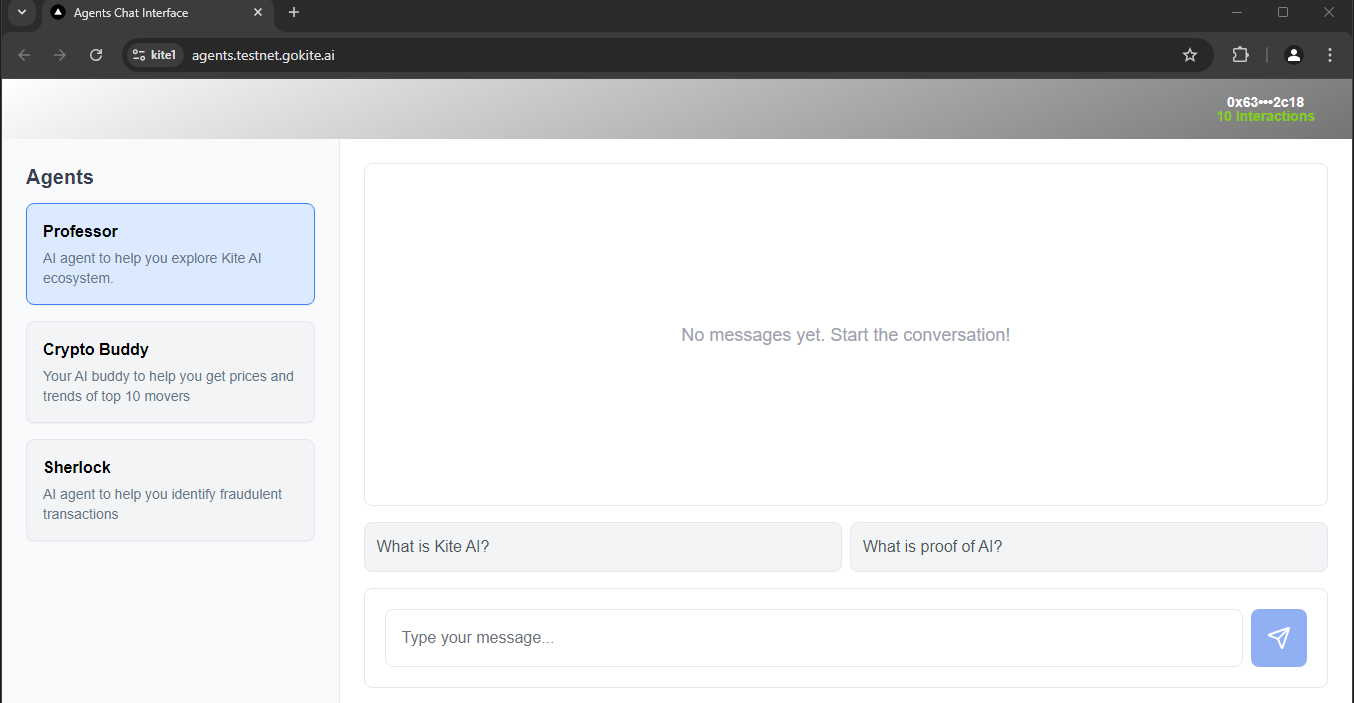
To achieve this, I configure the ChatGPT AI node as follows:
To create the API key, I visit API Key.
Create a new API key:
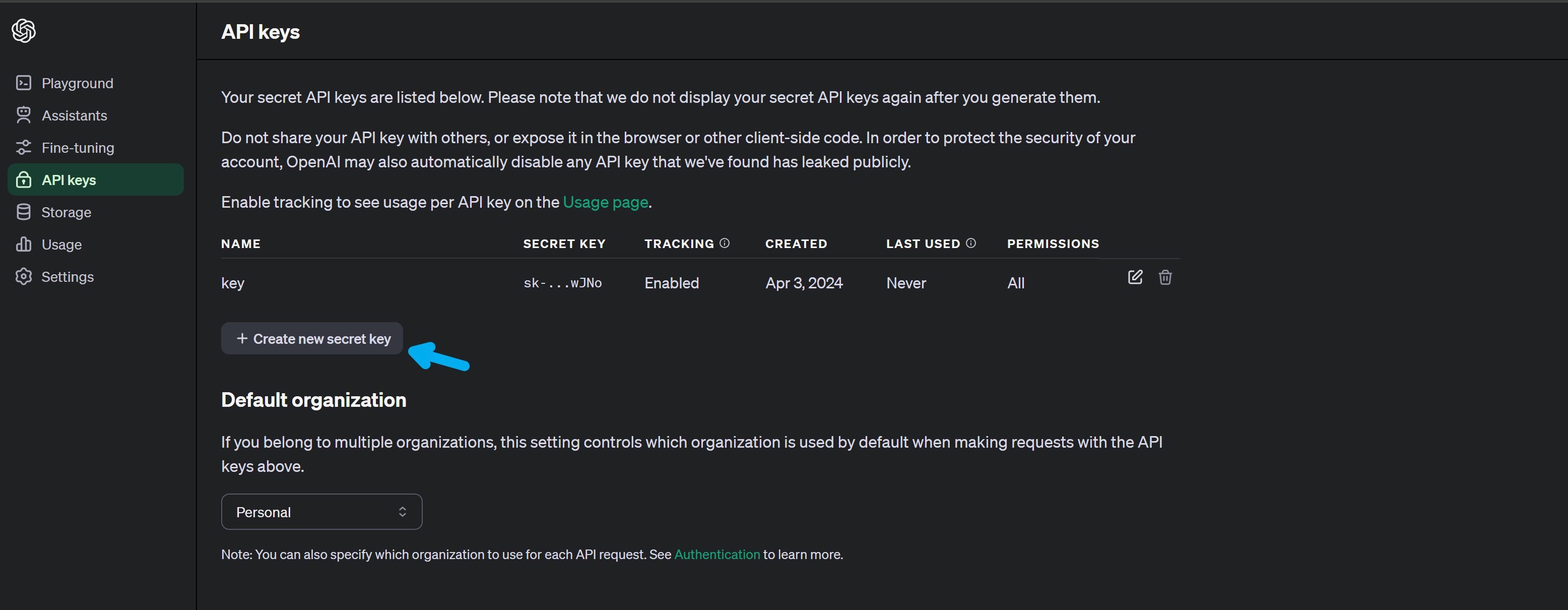
Enter a name and click create:
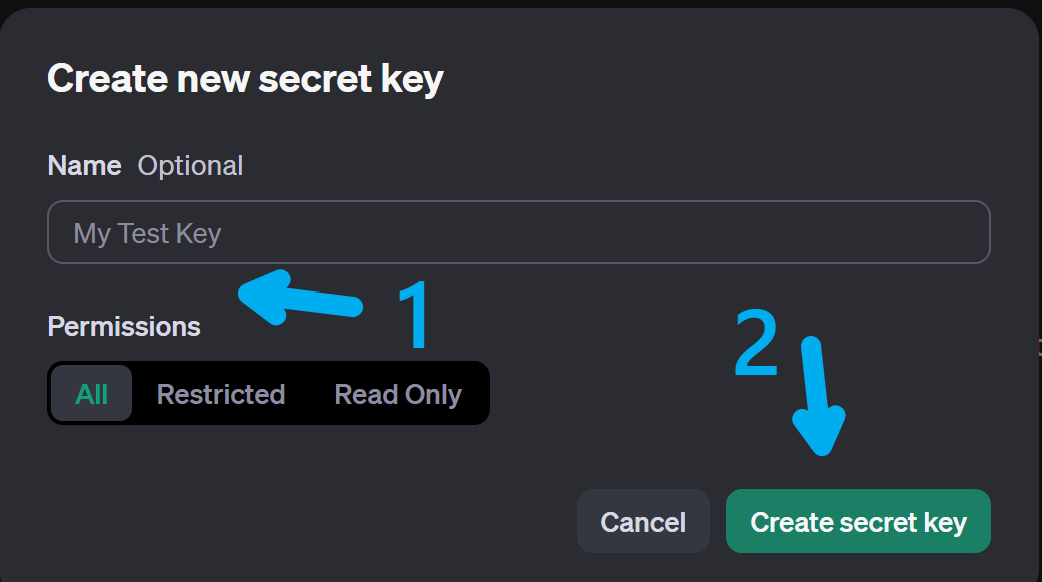
Save the API key for use:
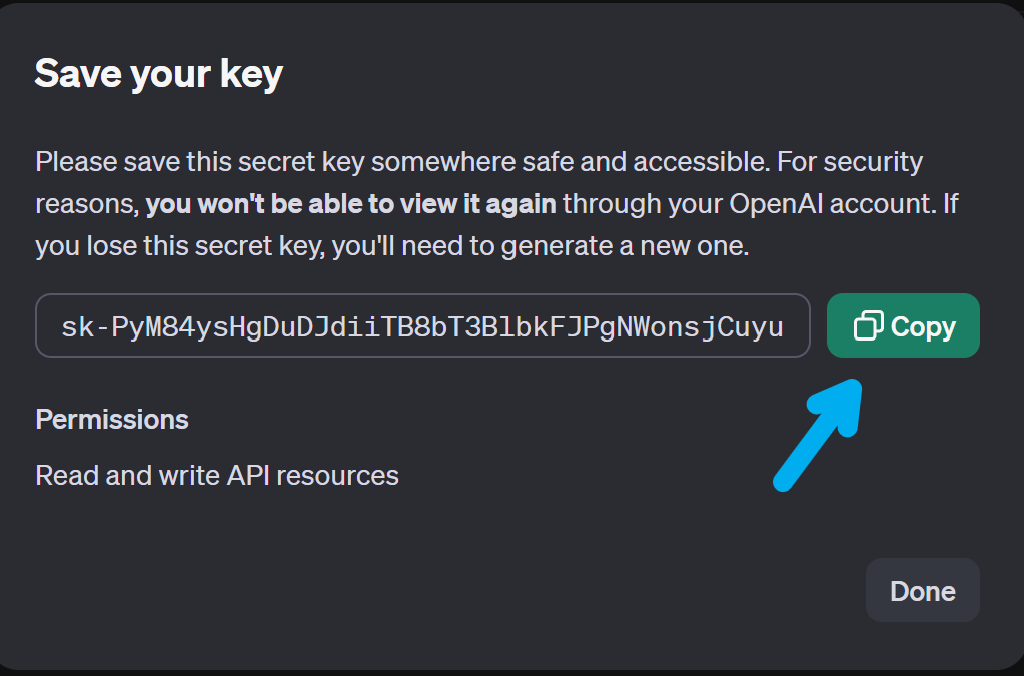
After creating the ChatGPT AI node, I enter the API key into the API Key field:

Since I want to generate text, I select the Text type:

For the Model field, since I want to generate a question, I choose the gpt-4o-mini model, suitable for generating questions:

For the Prompt field, since I want to generate a question for the Professor AI, which helps explore the Kite AI testnet ecosystem, I describe the prompt as: Create a question related to the Kite AI testnet ecosystem. I can also add requirements like question in English, no more than 100 characters, return only the question without additional characters. The prompt is entered as follows:
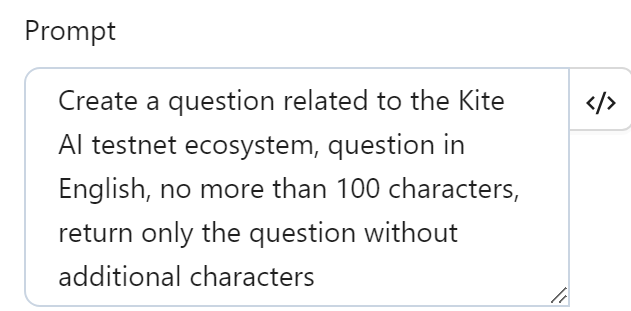
After running the node, it returns a question. To capture the question, I use a variable or table. For ease of use in the workflow, I assign the question to a variable named questionAI:

After configuration, I run the node, and the AI returns the result in the questionAI variable as follows:

After obtaining the question, I use a Key Press node to input the question, using the expression to retrieve the variable value: {{variables.questionAI}}, and send it to the AI:
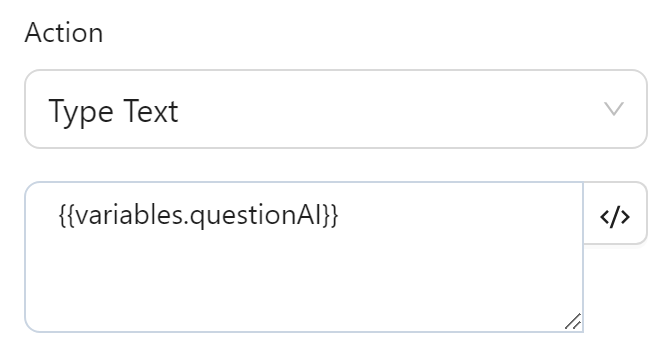
The text is then displayed as follows:
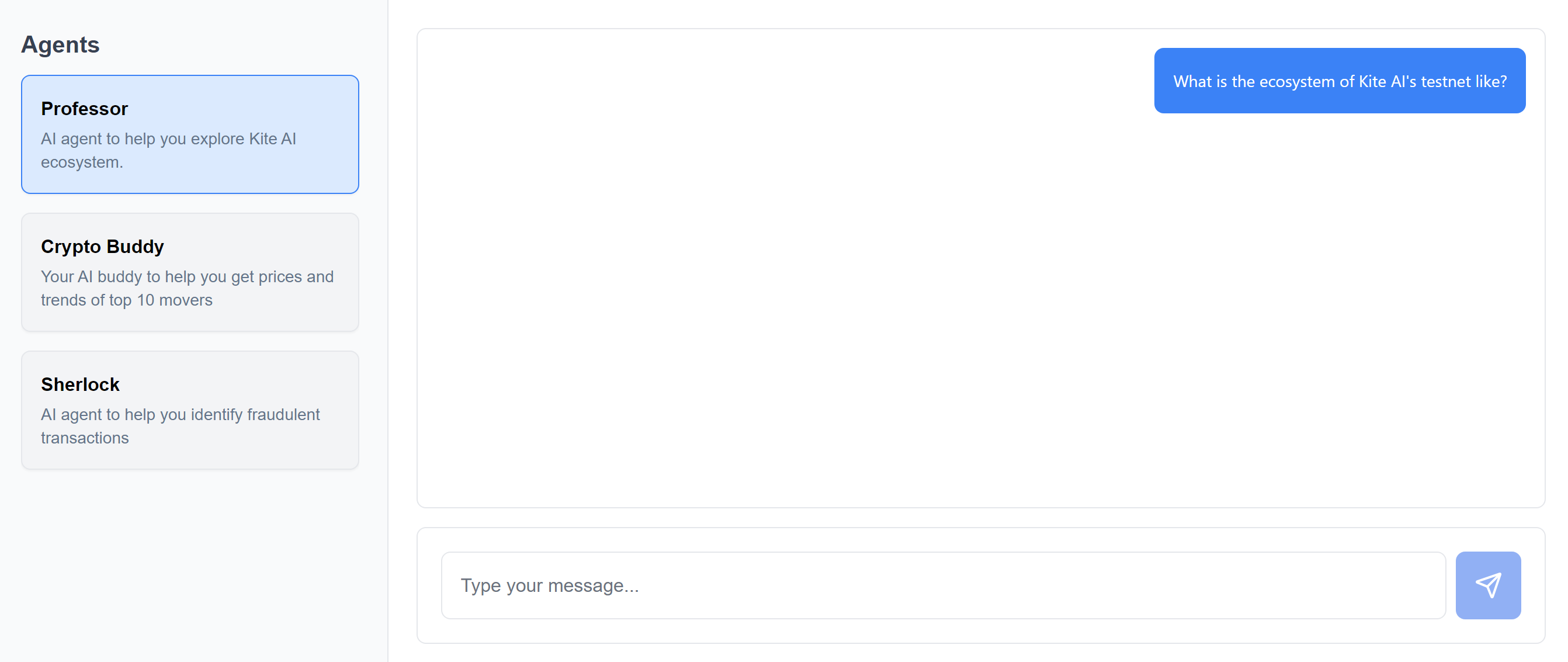
Thus, I have successfully used the ChatGPT AI node to generate a question for the Gokite AI testnet.
